How To Fix Cracks In Concrete Patio – With DIY Expert Advice
Every set of specifications and architectural plans have pages on how to fix cracks in concrete patios. Cracks in the concrete patio are unappealing. They form a habitat for bacterial growths, weeds, debris, and standing water. And when they get out of control, they become a source of trip hazards and can damage the entire surface of your patio.
The common cause of cracks in concrete patios cracks is due to increase drying. As the concrete shrinks, water evaporates. Factors like temperature and frequency of use can hasten this process. Contractors mostly result to waterproofing solutions to curb this problem. Although cracks could also be a sign that the concrete was poorly laid, working on the subgrade, modifying the concrete mix, and installing control joints are proven answers on how to fix cracks in concrete patio.
Concrete patio cracks can look like a minor problem, but if left unfixed, they can expand and reduce the value of your property. This guide will show you how to fix cracks in your concrete paving and restore your home’s curb appeal in seven simple steps.
Crack in Concrete Patio
Concrete patios are made with concrete, a durable material that has also been used to construct driveways, walkways, and parking lots. Although concrete is long-lasting when exposed to extreme weather conditions or heavy loads, it tends to crack. Most times, these cracks can easily be fixed as a DIY project.
The overall cost of repairing concrete patio cracks will depend on your location, you may need to check with your local building organization to get a permit before you can repair any crack on your concrete surface.
If you are fixing your patio cracks as a DIY project, you only need to spend money on renting or buying the tools and materials you need. If you decide to call a professional, you’ll have to pay an extra cost for labor. Usually, it will cost you between $50 – $300 for materials and labor to fix concrete patio cracks.
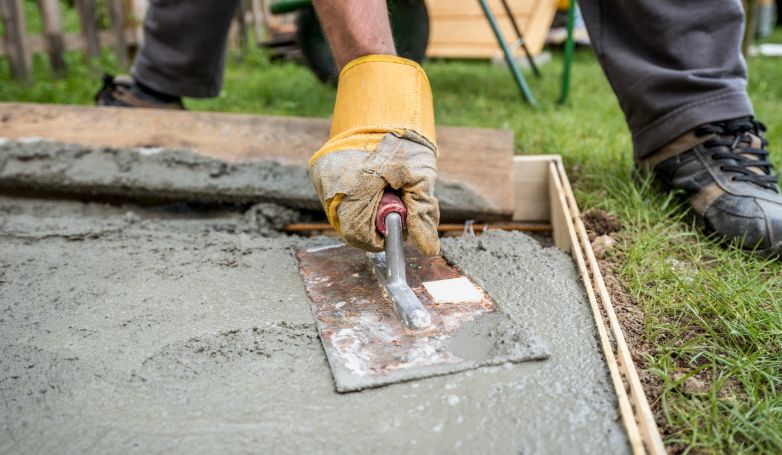
Tools & Materials To Fix A Crack In Concrete Patio
If you’re wondering on how to fix cracks in concrete patio, note that many patio problems can be fixed by the average person. However, without the right tools, you can’t achieve good work or a good finish on complex problems. Fixing patio cracks requires the following tools and materials:
- Putty knife
- Funnel
- Vacuum
- Wire brush
- Hammer
- Chisel
- Utility knife
- Level
Materials Needed
- Solid crack filler
- Polymer-based concrete crack filler
- Crack filler applicator
- Backer rod
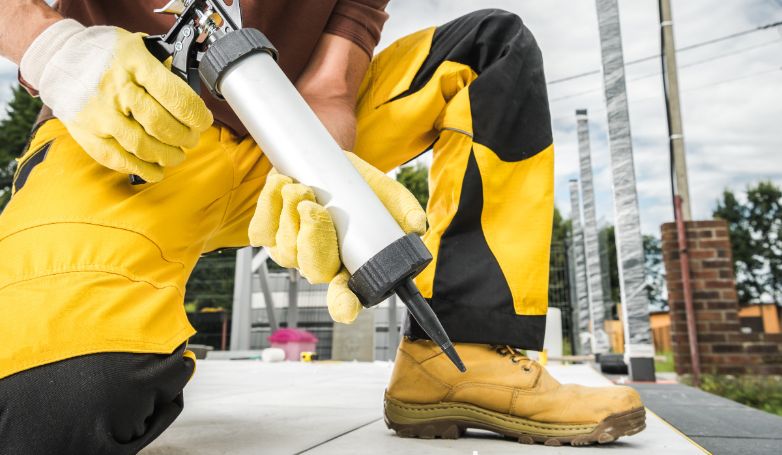
How To Fix Cracks In A Concrete Patio – 7 Steps to Follow
If you have noticed small cracks in your concrete patio, you don’t need to fret. These cracks can easily be repaired as a DIY project. In cases where the cracks have gone out of control and have significantly widened, you may require the help of a professional who can handle more complex damages. Here’s a step-by-step DIY guide to get started on fixing cracks in concrete patio:
1. Clean around the crack
Clear out dirt, debris, leaves, and any other object that can obstruct your work. If you are dealing with a small crack, you don’t have to remove all the furniture from the patio. However, if the cracks are spread across your patio surfaces, you might have to do some shifting. Remember that crack fixing is dusty work, and you should be able to mask up and wear protective gear.
2. Widen the crack
If you want your crack fillers to stick better, you must widen the crack and create more space with a hammer and a chisel. Knock away any loose or crumbling concrete from the surface of the crack.
3. Remove processing residues of the crack
Before you start repairing the cracks, you must remove all processing residues of the cracks and scrub the surface with a wire brush. Scrubbing will help you dislodge any debris or particles surrounding the cracks. After using your wire brush to dislodge particles, use a shop vacuum to remove dust and debris from the crack.
4. Apply the solid crack filler
You only need a solid crack filler when working with deep cracks. Ascertain the depth of the crack, and with a funnel, dispense some sand into the crack until it has leveled up. A backer rod is another option if you don’t want to use san.d as a solid crack filler. A three-quarter-inch backer rod is designed to fit perfectly into half an inch crack. Fit it in carefully, and cut off the backer rod when you get to a height that doesn’t need a solid filler.
5. Add the concrete crack filler
Now that you’ve gotten to this step, shake the crack filler container to mix the settled part of the solution well. With your crack applicator, fill up the crack slowly. Allow the filler to settle into the crack. Do this to all parts of the crack and ensure you cover the entire surface before leveling. How to fix cracks in concrete patio doesn’t get easier than this
6. Flatten the filler
Learning how to fix cracks in concrete patio ends with flattening the filler. After applying the crack filler, you need to flatten high areas and ensure they are equally leveled and the finishing is perfect. For surfaces that appear low, you can add more patch compounds to the area before leveling.
7. Protect the fixed patio for 24hrs
Once you are done fixing your patio cracks, you need to protect the fixed area from dirt, water, or from pets. Allow the patch material to dry for at least 24 hours before considering painting, sealing, or even stepping on it.
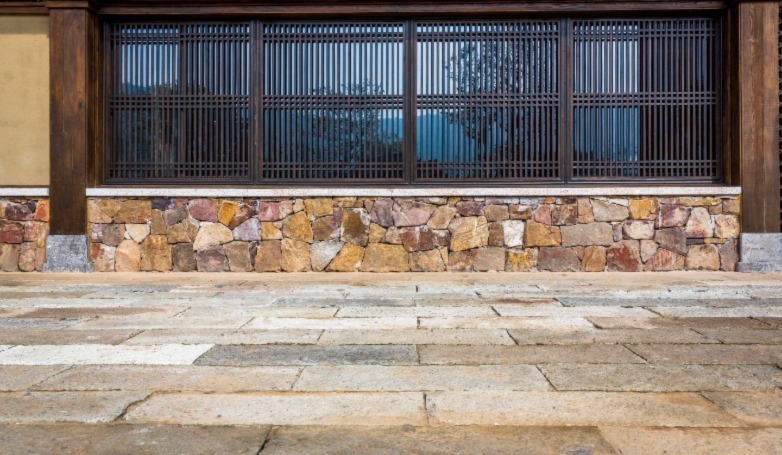
6 Extra Tips & Tricks to Maintain the Patio Final Result
Fixing your crack is not enough maintenance to keep it in good shape. You must learn to practice other tricks and strategies to preserve the integrity of your patio surface and keep your home in good shape. Here are a few tips we recommend;
1. Do not use anti-icing products:
Ice melting product helps clear off snow from your concrete driveway. At the same time, deicers or ice melts are harmful and degrade your concrete patio rapidly. To preserve your patio for a prolonged time, you should allow the ice to melt naturally.
2. Install an awning:
A patio awning will help preserve the life of your concrete by preventing the sun from hitting the surface of your concrete driveway directly. Installing an awning will help you maintain your concrete patio and create an extra living space.
3. Avoid cleaning with aggressive products:
There are many cleaning solutions you can use on your concrete patio, but some of these products can destroy your concrete surface or weaken the entire area. This is why we recommend using a cleaning solution that is specifically formulated for concrete patios.
4. Do not place heavy materials:
Each time a heavy weight is placed on your patio, it weakens the strength of your concrete surface. Rather use furniture that are light weighted as they add little weight to your concrete, which is insignificant.
5. Install a pergola:
A pergola is a roof covering that provides you with a relaxing patio space. Pergola provides protection against the rays of the sun and protects your patio surface from extreme weather conditions.
6. Set up an umbrella:
Extreme weather conditions easily weaken patio surfaces and cause a lot of damage. Installing an umbrella when it’s sunny, snowy, or when there is heavy rainfall will help you preserve your patio area. Also, preventing moisture from gathering on your patio surface will reduce damage.
Further Reading: How to Repair Cracks in Concrete Driveways – Best Crack Fillers
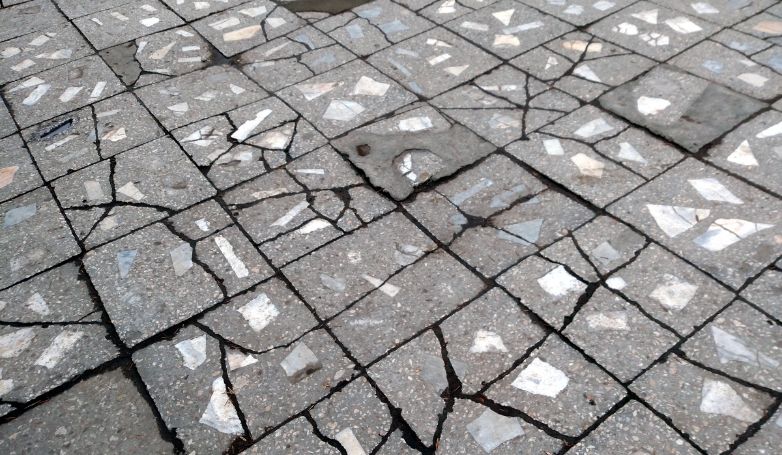
Is Fixing Cracks In The Concrete Patio Still Not Working?
It’s possible to fix cracks on your patio and still notice new cracks in fresh areas. Sometimes even the fixed cracks can open up and refuse to close no matter how much you try. Here are some of the reasons your crack repair process keeps failing;
1. Old and worn-out patios:
When you have had your patio installed for the longest time, it needs to be resurfaced. Old patios don’t look appealing and have less strength. They are usually weak and prone to cracks. And even when you try to repair the cracks that have appeared, they don’t last long because the surface has lost its integrity.
2. The crack keeps opening:
Cracking occurs under the weight of the concrete or as a result of heavy loads. When you don’t let your patch surface cure well and dry before you use it, you might experience some challenges fixing your cracks. Each time you fix a crack, ensure you allow the area to cure before you place any heavy patio furniture or objects on the fixed area.
3. More cracks have formed:
More cracks will tend to form if your patio surface is weak and worn out. This is a sign that you need to resurface, seal or do a thorough repair of your concrete patio surface.
4. Call a professional to fix cracks in the concrete patio
Cracks on concrete surfaces can be repaired quickly. However, when it’s become too difficult to fix your cracks, it is a sign that something more challenging is wrong with your patio. You need to call a professional immediately to fix cracks in your concrete patio.
Further Reading: How To Repair Cracks in Asphalt Driveway – Best Crack Fillers
Conclusion
With the right tools and DIY guide, you can master how to fix cracks in concrete patio in no time. Fixing cracks by yourself will also save you money. However, you shouldn’t hesitate to contact a professional contractor when your patio cracks are getting out of hand.

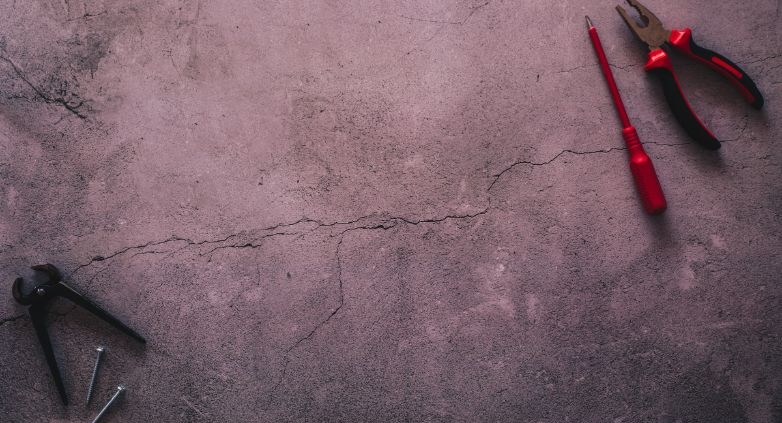

Leave a Reply
Want to join the discussion?Feel free to contribute!